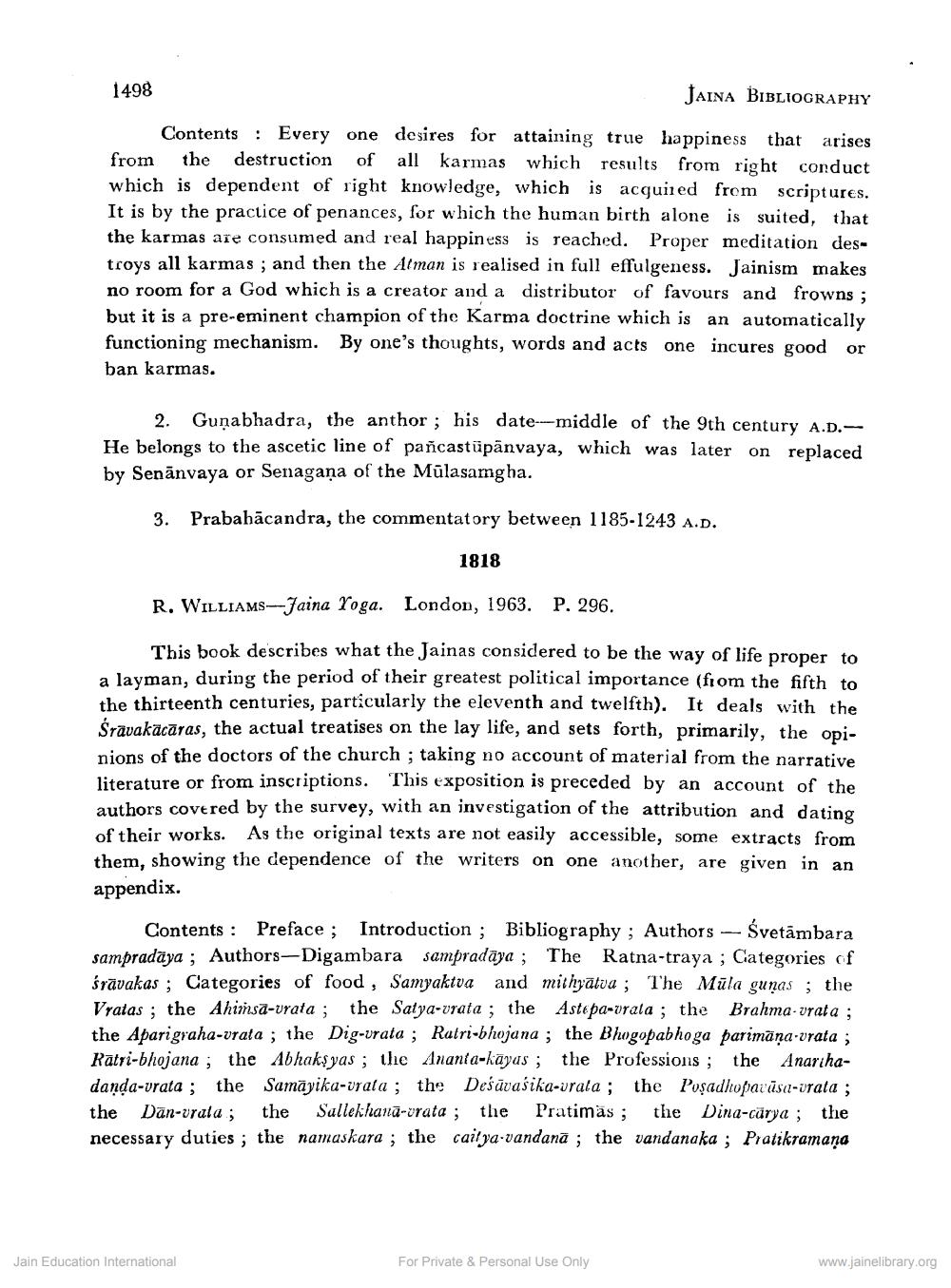________________
1498
JAINA BIBLIOGRAPHY
Contents: Every one desires for attaining true happiness that arises from the destruction of all karmas which results from right conduct which is dependent of right knowledge, which is acguired from scriptures. It is by the practice of penances, for which the human birth alone is suited, that the karmas are consumed and real happiness is reached. Proper meditation destroys all karmas ; and then the Alman is realised in full effulgeness. Jainism makes no room for a God which is a creator and a distributor of favours and frowns; but it is a pre-eminent champion of the Karma doctrine which is an automatically functioning mechanism. By one's thoughts, words and acts one incures good or ban karmas.
2. Gunabhadra, the anthor ; his date---middle of the 9th century A.D.He belongs to the ascetic line of pañcastūpānvaya, which was later on replaced by Senānvaya or Senagana of the Mülasamgha.
3. Prababācandra, the commentatory between 1185-1243 A.D.
1818
R. WILLIAMS--Jaina Yoga. London, 1963.
P. 296.
This book describes what the Jainas considered to be the way of life proper to a layman, during the period of their greatest political importance (from the fifth to the thirteenth centuries, particularly the eleventh and twelfth). It deals with the Śravakacāras, the actual treatises on the lay life, and sets forth, primarily, the opinions of the doctors of the church ; taking no account of material from the narrative literature or from inscriptions. This exposition is preceded by an account of the authors covered by the survey, with an investigation of the attribution and dating of their works. As the original texts are not easily accessible, some extracts from them, showing the dependence of the writers on one another, are given in an appendix.
Contents: Preface ; Introduction ; Bibliography; Authors - Svetāmbara sampradaya; Authors-Digambara sampradāya ; The Ratna-traya ; Categories of Śrāvakas ; Categories of food , Samyaktva and mithyatva ; The Mūla gunas ; the Vratas; the Ahimsa-vrata ; the Satya-vrata ; the Astepa-vrata ; the Brahma-vrata ; the Apari graha-vrata ; the Dig-vrata ; Ratri-bhojana ; the Bhogopabhoga parimāņa vrata; Ratri-bhojana ; the Abhakşyas ; the Ananta-kayas ; the Professions; the Anarihadanda-vrata ; the Samāyika-vrata ; the Deśūvasika-vrata ; the Poşadhopavāsa-vrata ; the Dan-vrala; the Sallekhanā-vrata ; the Pratimas; the Dina-carya ; the necessary duties; the namaskara ; the caitya-vandanā ; the vandanaka ; Pratikramana
Jain Education International
For Private & Personal Use Only
www.jainelibrary.org




